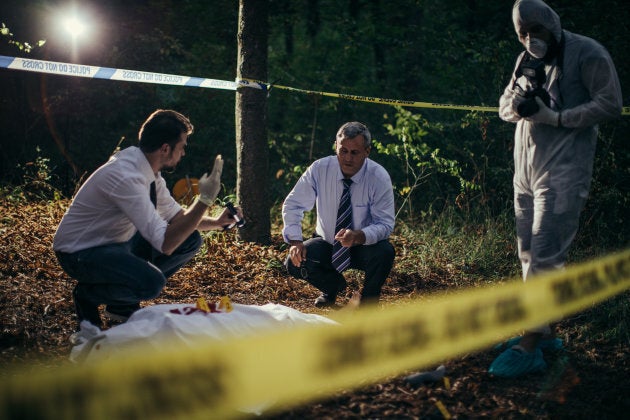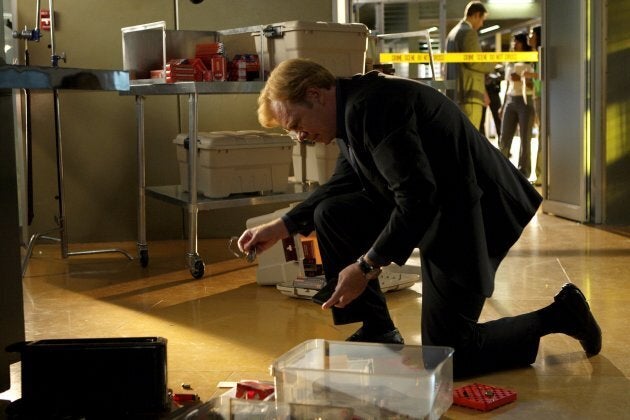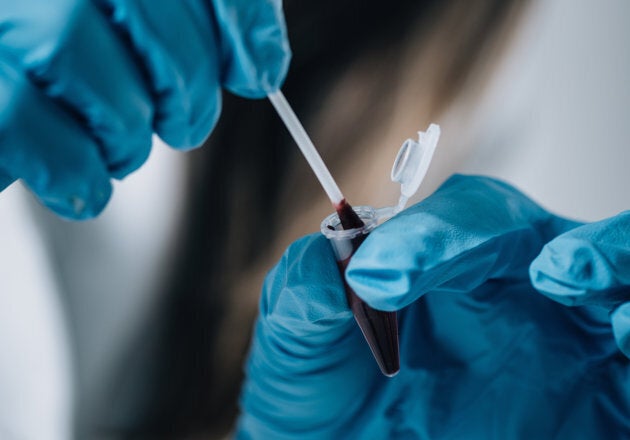It's a regular occurrence in television crime drama — the shallow grave. A kind soul has been murdered and the perpetrator has attempted to hide the body. Inevitably, someone comes across the remains and the hunt for the killer begins.
One of the hallmarks of this type of investigation is the forensics team. They're tasked with determining the time of death and, possibly, the nature of the circumstances regarding the dreadful act that took place. It's not an easy task, however, and they can use some help.

If you happen to have watched the popular television series, "Bones," you may know of avenues such as insects and chemical residues, better known as bugs and slime. But over the last 20 years, another tool has come into focus. This one involves the study of much smaller clues in the form of microbes.
The first example of using microbial evidence in a case was not used to help identify a buried victim but the transmission of a presumed deadly infection, HIV. Back in 1997, physician Richard J. Schmidt was convicted of attempted second degree murder for purposefully infecting an individual with the virus. The microbial evidence linking him to the crime was so strong that his appeals were denied. This case opened the door for prosecutors and researchers to work together to find ways to use microbiology in the courts to solidify a case.
Each of us has trillions of bacteria living in and on us and the collection of species is unique to every person.
As the years went by, other proof of concept ideas were developed to identify individuals based on a different type of microbiological information — our microbial flora. Each of us has trillions of bacteria living in and on us and the collection of species is unique to every person. Researchers have been discovering ways to use this reality to identify one particular person.
The first examinations involved oral microbes, which could be transferred through a bite. Then came our skin microbes, which could identify who touched a surface. Along similar lines was the ability to identify microbes transferred to another person particularly in cases of sex crimes.

Today, the idea of including microbiological collection in a forensics toolkit is gaining momentum. The acceptance has grown to a point the technique has even appeared on TV shows such as "CSI: Miami." In this case, they used microbes to help identify a culprit. While the real world has yet to catch up to Horatio Caine's ingenious ways, there is little doubt microbes will be an important part of criminal investigations.
The concept of identifying live humans may seem intriguing, yet when it comes to the dead, one might think microbes won't help. Yet, they may offer us the ability to determine certain factors such as time of death in those shallow graves. Even though we may no longer be living, the microbes continue to thrive and may offer valuable clues.
Now a recent study by an international group of researchers has revealed an analysis of the different species in and around a deceased body might be quite valuable. They attempted to find a way to link up time of death with the microbial composition of the person and surrounding area. The results suggest this approach may provide a necessary component to catch a killer.

The team worked with rats as an animal model for humans. However, the situation they created appeared to come straight out of a crime script. They buried the rats in shallow graves about 40 centimetres in depth. As for the area, it was a typical place where you might find a body. It was a green area with trees, plants and shrubs. Even the soil used was perfect — black and easy to manipulate.
Once the rats were buried, the team monitored a variety of different physical parameters such as the air and soil temperature as well as the pH of the soil, the relative humidity of the air and precipitation amounts for that region. To account for the different seasons, the team conducted the experiments in March and also in June.
They could identify almost every parameter needed for forensics.
Over the course of the next 30 days, rats were excavated and analyzed for microbial populations both around the body and also in the gastrointestinal tract. The goal was to identify whether any species would end up taking over as the most dominant decomposers. If they were right, as time went on, a noticeable difference would be seen.
The first result was not surprising. There was a rather large difference in microbiological activity between the March and June experiments. The higher temperatures of the summer led to faster decomposition and changes towards bacteria known to be involved in breaking down the body. In March, on the other hand, some rats were not fully decomposed even at the 30 day mark.
More from Jason Tetro on HuffPost Canada:
But the main goal of this experiment was to determine whether a link between specific species and time of death could be found. When all the data came back, one species came out as the true marker. It was the bacterium Enterococcus faecalis, which is a normal part of the human digestive tract. Using the amount of this species recovered and comparing it to the presence of other species, they could identify almost every parameter needed for forensics.
The results of this study reveal even more use for microbiology for those crime scene investigators. While the findings are still early, there is hope that one day this species may be used as a means to help determine time of death. Granted, it may be too late to help Jack McCoy get a conviction, but eventually this technology will find its way into forensics and, with little doubt, the television screen.
Have you been affected personally by this or another issue? Share your story on HuffPost Canada blogs. We feature the best of Canadian opinion and perspectives. Find out how to contribute here.
Also on HuffPost: